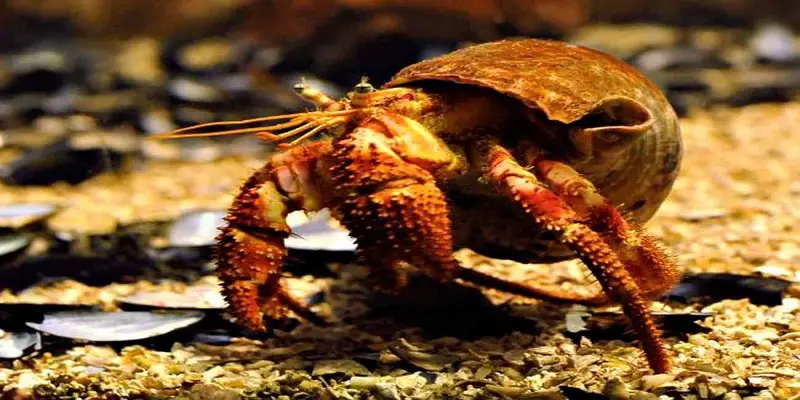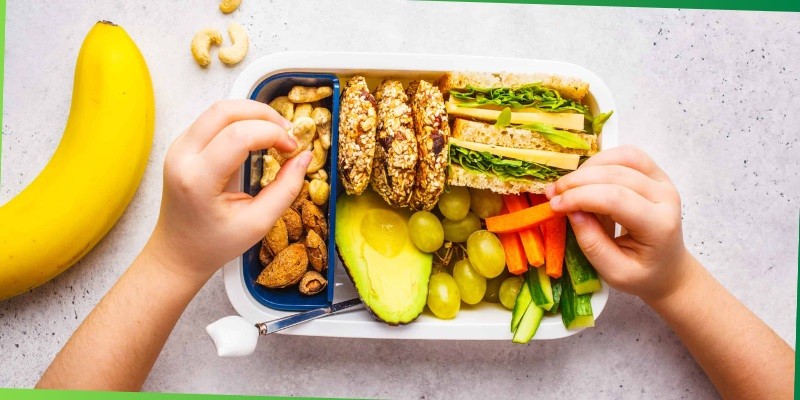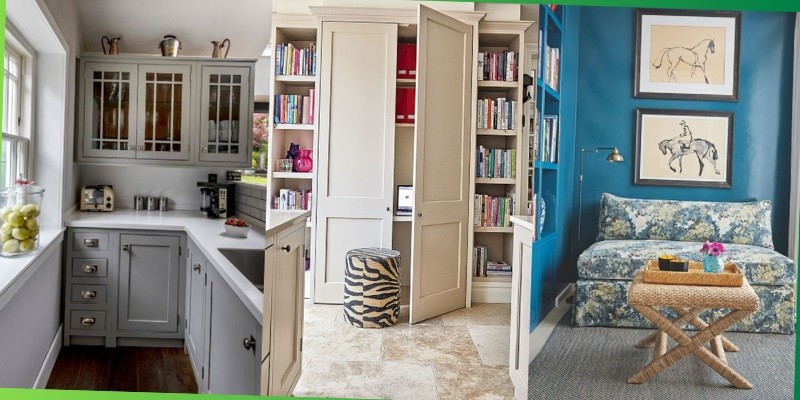Last Updated on October 22, 2023
To clean a hermit crab tank, remove the crabs and place them in a secure temporary habitat, then remove and clean all tank decorations, scrub the tank walls and substrate, and replace the water and substrate before returning the crabs to their cleaned tank. Proper maintenance of a hermit crab tank is essential for the health and well-being of these unique pets.
Cleaning the tank regularly helps remove waste, bacteria, and odor, creating a clean and safe habitat for the crabs. Following simple steps to clean the tank will ensure the happiness and longevity of your hermit crab pets. We will provide a step-by-step guide on how to clean a hermit crab tank effectively.
So let’s dive in!

Credit: crabstreetjournal.org
The Impact Of A Dirty Tank On Hermit Crab Health
A dirty tank can have a negative impact on the health of hermit crabs. It is important to know how to clean their tank properly to ensure their well-being.
Maintaining a clean and healthy environment in your hermit crab tank is crucial for their overall well-being. A dirty tank can have a significant impact on the health of your hermit crabs, leading to potential health risks and various complications.
In this section, we will explore the importance of a clean and healthy environment for hermit crabs and discuss the potential health risks associated with a dirty tank.
Potential Health Risks:
- Bacterial infections: A dirty tank provides a breeding ground for harmful bacteria that can cause infections in hermit crabs. These infections can lead to serious health issues if left untreated.
- Fungal growth: Moist and dirty conditions favor the growth of fungi, which can also pose a threat to the health of your hermit crabs. Fungal infections can affect their exoskeleton and overall immune system.
- Respiratory problems: Accumulation of waste, ammonia, and stale air in a dirty tank can result in respiratory issues for hermit crabs. This can lead to difficulty in breathing and other respiratory complications.
- Parasitic infestations: A dirty tank attracts parasites like mites, ticks, and lice, which can transmit diseases and cause discomfort to your hermit crabs. Infestations can weaken their immune system and hinder their growth.
Importance Of A Clean And Healthy Environment:
- Prevents diseases: Regularly cleaning and maintaining the tank can help to minimize the risk of hermit crabs contracting diseases. A clean environment provides a healthier habitat for them to thrive.
- Promotes good hygiene: A clean tank ensures that hermit crabs are not exposed to waste, bacteria, or fungi that can compromise their hygiene. This helps to prevent infections and maintain their overall health.
- Enhances respiratory function: A clean tank with proper ventilation reduces the risk of respiratory problems for hermit crabs. Fresh air circulation promotes healthy breathing and prevents respiratory complications.
- Supports molting process: Hermit crabs undergo molting, a vital process for growth and shedding of their exoskeleton. A clean tank provides a conducive environment for successful molting, reducing the risk of complications during this vulnerable stage.
- Enhances overall well-being: A clean and healthy habitat contributes to the overall well-being of hermit crabs. It reduces stress levels, promotes natural behaviors, and allows them to lead a healthier and happier life.
Maintaining a clean hermit crab tank not only ensures their health and well-being but also allows for a more enjoyable experience as a pet owner. By creating a clean and healthy environment, you are taking important steps towards providing optimal care for your hermit crabs.
Regular cleaning and proper maintenance will help you prevent potential health risks and create a safe haven for your little crustacean friends.
Signs That Indicate A Dirty Hermit Crab Tank
Is your hermit crab tank showing signs of being dirty? Look out for unpleasant odors, cloudy water, and dirty substrate. Regular cleaning is essential to keep your hermit crab habitat healthy and safe. Learn how to clean a hermit crab tank effectively for happy and thriving pets.
Maintaining a clean and healthy environment for your hermit crabs is crucial to their well-being. Signs of a dirty hermit crab tank should not be ignored, as they can lead to various health issues. Here are some key indicators that it’s time for a thorough cleaning:
Odor:
- Unpleasant smells emanating from the tank are a clear indication of a dirty habitat.
- The buildup of waste, leftover food, or decaying organic matter can cause a foul odor.
- Sniff around the area to detect any unusual or pungent smells, as these imply that it’s time to clean out the tank.
Water Discoloration:
- Check the water in your hermit crab tank regularly for any changes in color.
- If the water appears cloudy, murky, or shows signs of discoloration, it’s an indication of a dirty environment.
- Water in a clean tank should be clear, providing a conducive space for your hermit crabs to thrive.
Debris Accumulation:
- Excess debris littering the tank is an obvious sign that it needs cleaning.
- Look for accumulations of uneaten food, exoskeletons, molt remains, or waste that may have built up over time.
- The presence of debris not only compromises the aesthetic appeal of the tank but can also pose health risks to your hermit crabs.
Regularly monitoring these signs will ensure a hygienic living environment for your hermit crabs. By addressing any signs of a dirty tank promptly, you can help prevent potential health problems and ensure the well-being of your beloved crustaceans.
Essential Supplies For Cleaning A Hermit Crab Tank
Clean your hermit crab tank effectively with these essential supplies. Ensure you have a tank scrub brush, dechlorinator, safe cleaning solution, tank vacuum, gravel siphon, and fresh substrate to maintain a healthy habitat for your hermit crabs.
Cleaning a hermit crab tank is an important part of their care routine. Maintaining a clean and hygienic environment is crucial for the health and well-being of these adorable creatures. To make the cleaning process easier and more effective, it is essential to have the right supplies on hand.
Here are some of the must-have supplies for cleaning a hermit crab tank:
Non-Toxic Cleaning Agents
Using the right cleaning agents is crucial to ensure the safety of your hermit crabs. Opt for non-toxic cleaning agents specifically formulated for use in reptile and amphibian habitats. These cleaning agents are designed to eliminate bacteria and fungi without posing any harm to your hermit crabs.
Look for products that are free from harsh chemicals and safe for aquatic life.
Soft-Bristle Brush
A soft-bristle brush is an invaluable tool when it comes to cleaning a hermit crab tank. This gentle brush helps you effectively remove dirt, algae, and other residue from the tank walls and decorations without causing any damage. Ensure that the brush you choose has soft bristles to protect the delicate surfaces of your hermit crab’s home.
Bucket Or Container For Water
Having a dedicated bucket or container for water is essential for cleaning a hermit crab tank. This container will serve as a reservoir for fresh water during the cleaning process. Choose a container that is large enough to accommodate the amount of water needed for cleaning.
It’s important to use a separate container rather than using the hermit crab’s regular water source to avoid contamination.
To clean a hermit crab tank effectively, it is important to have the right supplies. Non-toxic cleaning agents specifically formulated for reptile habitats, a soft-bristle brush, and a separate bucket or container for water are essential for a successful cleaning routine.
By using these supplies, you can ensure a clean and healthy environment for your hermit crabs.
Optional Supplies For Cleaning A Hermit Crab Tank
Optional supplies for cleaning a hermit crab tank include a gravel vacuum, water conditioner, and sponge. These items can help maintain a clean and healthy environment for your pet.
Cleaning and maintaining a hermit crab tank is essential to ensure your little crustacean companions stay happy and healthy. While the basics like a spray bottle, dechlorinated water, and a clean sponge are necessary for routine cleaning, there are some optional supplies that can make the task even more efficient and enjoyable.
Here are a few additional items you might want to consider:
Gravel Vacuum:
- A gravel vacuum is a beneficial tool for keeping your hermit crab tank clean and free of debris. Here’s why it’s worth considering:
- It helps remove uneaten food, waste, and any other unwanted particles from the gravel or sand substrate.
- By siphoning out the debris, a gravel vacuum prevents the growth of harmful bacteria and maintains water quality.
- Using a gravel vacuum during water changes ensures that your hermit crabs have a clean and healthy environment to live in.
Artificial Plants Or Decorations:
- While natural elements like driftwood and live plants can add a touch of realism to your hermit crab tank, artificial plants or decorations have their own advantages:
- They are easy to clean and maintain, preventing the accumulation of waste or harmful bacteria.
- Artificial plants offer a safe alternative to live plants, which may contain pesticides or fertilizers harmful to hermit crabs.
- Decorative ornaments and caves provide hiding spots for your hermit crabs, giving them a sense of security and reducing stress.
- Choosing artificial plants or decorations that closely resemble the natural environment can create a visually appealing and stimulating habitat for your hermit crabs.
Remember, these supplies are optional, and you can choose what works best for you and your hermit crab tank. Incorporating these items into your cleaning routine can enhance the overall appearance of the tank and contribute to the well-being of your hermit crabs.
Step 1: Removing The Hermit Crab From The Tank
To clean a hermit crab tank, start by removing the hermit crab from the tank. This step is crucial to ensure a thorough cleaning process and maintain the health of your pet.
When it comes to cleaning a hermit crab tank, the first step is to remove the hermit crab from its current habitat. This ensures the safety of the crab and allows you to thoroughly clean the tank without any disturbances.
Here are the steps to follow:
- Use a separate container: Prepare a separate container, ideally with a lid, where you can temporarily house the hermit crab while you clean its tank. This can be a small plastic container or a bucket filled with some damp sand substrate from its enclosure. Make sure the container is clean and free of any harmful substances.
- Handle the hermit crab gently: Carefully remove the hermit crab from its tank using your hands or a scoop. Approach it slowly to avoid startling or stressing the crab. Hold it gently and cautiously, ensuring you don’t apply too much pressure on its delicate body.
- Transfer the hermit crab to the separate container: Once you have safely removed the hermit crab, place it into the prepared separate container. Ensure that the container is secure and escape-proof, as hermit crabs are known for their ability to climb and squeeze through small openings.
- Cover the separate container: To prevent the hermit crab from escaping, securely attach a lid or cover to the container. Make sure the lid has adequate ventilation to allow for proper airflow without risking the crab’s escape. This will also keep the crab’s new temporary home dark and secure.
- Keep the hermit crab in a safe place: Find a suitable location to keep the hermit crab while you clean its tank. Choose an area away from direct sunlight, extreme temperatures, and any potential hazards. Remember, hermit crabs are sensitive to their environment, so providing a stress-free space is crucial.
Following these steps will help ensure a smooth and safe process for removing your hermit crab from its tank before cleaning. It is essential to take your time and handle the crab gently to avoid causing unnecessary stress or harm.
Now that you have removed the crab, you can proceed to the next steps of cleaning and maintaining its tank.
Step 2: Emptying And Cleaning The Tank
In step 2 of cleaning a hermit crab tank, it is crucial to empty the tank completely and thoroughly clean it. This process ensures a healthy and safe environment for your pet.
How To Clean A Hermit Crab Tank?
Keeping a clean and healthy environment for your hermit crab is essential for its well-being. Regular cleaning of the tank is necessary to remove any waste, bacteria, or odor that can build up over time. In this step-by-step guide, we will focus on the second crucial step of the cleaning process: emptying and cleaning the tank.
Remove Any Leftover Food And Shells:
As hermit crabs tend to scavenge and eat throughout the day, it’s important to remove any leftover food to prevent it from spoiling and creating foul odors in the tank. Here’s how you can effectively remove any leftover food and shells:
- Inspect the tank: Carefully scan the tank and identify any uneaten food or discarded shells.
- Use a scoop or tongs: With a scoop or tongs, gently pick up any remaining food and shells.
- Discard appropriately: Place the discarded food and shells into a sealable bag or waste container for disposal.
- Wipe or rinse the area: Use a damp cloth or sponge to wipe away any residues from the tank’s surfaces.
Empty The Tank Water:
Regularly changing the tank water is crucial to maintain the cleanliness of your hermit crab’s habitat. Follow these steps to empty and replace the tank water efficiently:
- Prepare a clean container: Get a separate container, like a bucket or sink, to hold the water temporarily.
- Remove accessories: Take out any rocks, decorations, or toys from the tank and place them aside for cleaning later.
- Pour out the water: Carefully pour out the existing tank water into the designated container, ensuring not to spill or create a mess.
- Rinse the tank: Using fresh water, rinse the tank thoroughly to remove any remaining debris or traces of the old water. Refrain from using soap, as it can be harmful to your hermit crab.
- Wipe and dry the tank: Use a clean cloth or towel to wipe the tank’s interior, ensuring it is completely dry before adding new water.
Remember, maintaining a clean hermit crab tank is an ongoing task that requires regular attention. By following these steps and keeping up with a consistent cleaning routine, you can create a safe and healthy habitat for your cherished crustacean friend.
Stay tuned for the next step in our comprehensive guide on how to clean a hermit crab tank!
Step 3: Cleaning The Tank Accessories And Decorations
To clean a hermit crab tank, step 3 involves cleaning the tank accessories and decorations. Ensure proper hygiene by removing and washing all objects in warm, soapy water, then rinsing them thoroughly before adding them back to the tank.
After giving your hermit crab tank a thorough cleaning, it’s important not to forget about the accessories and decorations inside. These components can harbor dirt, algae, and bacteria, which can negatively impact your hermit crab’s health. Follow these steps to ensure that your tank accessories and decorations are clean and safe for your hermit crab:
- Rinse the tank accessories thoroughly: Remove all tank accessories, such as rocks, shells, and plastic plants. Rinse them under running water to remove any debris or leftover cleaning solution.
- Scrub any algae or debris: Use a non-toxic scrub brush or sponge to gently scrub any visible algae or debris from the accessories and decorations. Be thorough but careful not to damage delicate or fragile items.
- Soak in vinegar solution: For particularly stubborn algae or mineral deposits, create a solution of equal parts water and white vinegar. Submerge the accessories and decorations in this solution for a few minutes, then scrub again if necessary.
- Rinse well: After scrubbing and soaking, rinse the tank accessories and decorations again under running water to remove any traces of vinegar or cleaning solution. It’s important to ensure that no harmful substances are left behind.
- Dry completely: Allow the accessories and decorations to air dry completely before returning them to the tank. This will prevent any moisture from accumulating and creating a breeding ground for bacteria.
- Inspect for damage: While cleaning, take the opportunity to inspect all tank accessories and decorations for any signs of damage. Discard any items that are broken or have sharp edges to prevent injury to your hermit crab.
Remember, the cleanliness of your hermit crab tank directly affects the overall health and well-being of your pet. By regularly cleaning the tank accessories and decorations, you can create a clean and safe environment for your hermit crab to thrive.
Step 4: Cleaning The Tank Substrate And Gravel
Step 4 of cleaning a hermit crab tank involves carefully cleaning the tank substrate and gravel to maintain a healthy environment for your pet. Remove any uneaten food, waste, and debris, and rinse the substrate and gravel under running water to ensure cleanliness without harming the crabs.
As you continue to clean your hermit crab tank, it’s important not to neglect the substrate and gravel. This step ensures that your hermit crab’s environment remains clean and healthy. Here’s what you need to do:
Use A Gravel Vacuum To Remove Waste:
- Gently run the gravel vacuum over the substrate, carefully sucking up any accumulated waste and debris.
- Gradually move the vacuum around the tank to cover the entire surface area.
- Avoid disturbing your hermit crab or its hiding places during this process.
- Ensure that the vacuum’s suction is not too strong, as it may disrupt the substrate or harm your hermit crab.
Rinse The Substrate If Necessary:
- If you notice any foul odors or visible dirt in the substrate, it may be time for a rinse.
- Scoop out a small portion of the substrate and place it in a clean container.
- Run lukewarm water over the substrate, swishing it around gently to remove any dirt or impurities.
- Drain the water and repeat this process until the water runs clear.
- Allow the rinsed substrate to air dry before returning it to the tank.
Remember to maintain a routine cleaning schedule for your hermit crab’s tank, ensuring that the substrate and gravel remain clean and free from waste. This not only promotes a healthier environment for your hermit crab but also helps maintain the overall aesthetics of the tank.
Step 5: Refilling The Tank And Reintroducing The Hermit Crab
To clean a hermit crab tank, refill the tank with fresh saltwater and reintroduce the hermit crab. Ensure the water is at the right temperature and add appropriate water conditioner before placing the crab back in its home.
After thoroughly cleaning the hermit crab tank, it’s time to refill it and safely reintroduce your little friend back into their cozy habitat. Here’s what you need to do:
Use Dechlorinated Water
- Fill a clean container with dechlorinated water that is at the same temperature as the tank.
- Dechlorinated water is essential to prevent any harmful effects of chlorine on your hermit crab’s delicate body.
Gradually Transfer The Hermit Crab Back Into The Tank
- Gently scoop up your hermit crab using a small net or your hands, being careful not to harm them.
- Slowly lower the crab into the tank and allow them to adjust to the water.
- It’s best to release them near their favorite hiding spot or a place with plenty of climbing opportunities.
Monitor Their Behavior
- Observe your hermit crab closely to ensure they are comfortable in their freshly cleaned and refilled tank.
- Pay attention to their activity level, eating habits, and overall behavior.
- If you notice any signs of stress or illness, consult a veterinarian experienced in hermit crab care.
Maintain The Ideal Environment
- Regularly monitor the temperature and humidity levels in the tank to maintain a suitable environment for your hermit crab.
- Keep the substrate moist but not overly wet to mimic their natural habitat.
- Ensure the availability of fresh water and nutritious food to keep your hermit crab happy and healthy.
Avoid Overcrowding
- Remember, hermit crabs are social creatures but can be territorial at times.
- It’s important not to overcrowd the tank with too many crabs, as this might lead to stress or aggressive behavior.
- Provide enough space and hiding spots for each individual crab to minimize conflicts.
Sit Back And Enjoy Your Clean Hermit Crab Tank
- Congratulations! You have successfully cleaned and refilled your hermit crab tank.
- Admire your little buddy as they explore their sparkling clean home and make sure to repeat the cleaning process regularly to maintain their well-being.
By following these steps, you’ll keep your hermit crab happy and healthy in their clean and comfortable habitat. Enjoy the delightful moments with your shell-dwelling friend!
Establishing A Regular Cleaning Routine
Maintaining a regular cleaning routine for your hermit crab tank is essential to ensure a healthy environment. Learn how to clean your tank effectively and keep your hermit crab happy and safe.
Keeping your hermit crab tank clean is crucial for your pet’s health and well-being. Establishing a regular cleaning routine will ensure that the tank remains clean, providing a safe and hygienic environment for your hermit crab. Here are a few key aspects to consider when setting up a cleaning routine:
Frequency Of Cleaning
To maintain a healthy tank environment for your hermit crab, it’s important to clean on a regular basis. The frequency of cleaning will depend on various factors, such as the size of the tank, the number of hermit crabs, and the condition of the substrate.
Generally, it’s recommended to clean the tank every two to four weeks. However, if you notice excessive waste or an unpleasant odor in the tank, it may require more frequent cleaning.
Here are some factors to consider when determining the frequency of cleaning your hermit crab tank:
- Tank size: Larger tanks tend to have more stable water parameters and can handle waste accumulation better, allowing for less frequent cleaning.
- Number of hermit crabs: As more hermit crabs produce waste, more frequent cleaning may be necessary to maintain optimal conditions.
- Substrate condition: If the substrate becomes heavily soiled or moldy, it’s a clear indication that the tank needs cleaning.
Partial Water Changes
One important aspect of cleaning the hermit crab tank is performing regular partial water changes. This involves replacing a portion of the tank water while leaving some of the old water behind. Partial water changes help remove accumulated waste, excess minerals, and toxic substances.
They also help maintain proper humidity levels in the tank.
Here are some tips for performing effective partial water changes:
- Aim to change approximately 25% of the water volume during each water change.
- Use dechlorinated freshwater that is at the same temperature as the tank water to minimize stress on the hermit crab.
- Use a siphon or a water changer to remove water and debris from the tank. Be careful not to disturb the substrate too much, as hermit crabs rely on it for building their burrows.
- Avoid removing all the water at once, as it can disrupt the balance of beneficial bacteria.
Establishing a regular cleaning routine for your hermit crab tank will not only ensure a healthy living environment but also contribute to the overall well-being of your pet. By following a consistent schedule and paying attention to the tank’s cleanliness, you can provide a comfortable and safe habitat for your hermit crab companion.
Monitoring And Adjusting Tank Conditions
Maintaining optimal tank conditions for hermit crabs includes regular monitoring and adjustments. Learn how to effectively clean a hermit crab tank and provide a healthy living environment for your pets.
Maintaining the ideal conditions for your hermit crab’s tank is crucial to ensure their health and well-being. By monitoring and adjusting temperature and humidity levels, as well as assessing water quality, you can create a comfortable environment for your little crustacean friend.
Temperature And Humidity Levels:
- The temperature in the hermit crab tank should be maintained between 75-85 degrees fahrenheit (24-29 degrees celsius).
- Use a thermometer to regularly check the temperature and make adjustments if needed.
- Keep in mind that temperature fluctuations can be harmful to hermit crabs, so aim for consistency.
- Humidity is also essential for hermit crabs, as they have gills and depend on a certain level of moisture.
- Maintain a humidity level of 70-80% in the tank by misting the habitat with dechlorinated water.
- Regularly measure the humidity using a hygrometer and adjust accordingly by adding or removing water.
Assessing Water Quality:
- Water plays a vital role in a hermit crab’s life, as they need it for drinking, bathing, and maintaining their shell moisture.
- Ensure that the water in your hermit crab’s tank is free from chlorine and other harmful chemicals by using dechlorinated water.
- Regularly replace the water in the water dishes to prevent microbial growth.
- Pay attention to any foul odor or discoloration in the water, as it may indicate contamination.
- Perform routine water tests using appropriate aquarium test kits to assess the water quality.
- Adjust the water conditions as necessary by adding fresh water or using water conditioners.
Remember, monitoring and adjusting tank conditions is an ongoing process to maintain a healthy and comfortable habitat for your hermit crab. By providing the right temperature, humidity, and water quality, you’re ensuring the well-being of your precious pet.
Preventing Common Tank Cleaning Mistakes
Looking to clean your hermit crab tank? Avoid common cleaning mistakes by following these simple guidelines. Proper maintenance is essential for a healthy habitat for your pet.
Cleaning a hermit crab tank is an essential task for maintaining a healthy and comfortable habitat for your little crustacean friend. However, it’s important to be mindful of certain mistakes that can arise during the cleaning process. By avoiding these pitfalls, you can ensure a safe and clean environment for your hermit crab.
Here are some key pointers to help you prevent common tank cleaning mistakes:
Avoid Using Harsh Chemicals:
- Harsh chemicals can be harmful to hermit crabs, as they are sensitive creatures. Avoid using any cleaning products that contain bleach, ammonia, or other strong chemicals.
- Opt for natural alternatives such as white vinegar or citric acid-based cleaners. These are safer options that won’t leave behind toxic residues harmful to your hermit crab.
- Always rinse the tank thoroughly after cleaning to ensure that no cleaning product residue remains. Residual chemicals can contaminate the water and harm your hermit crab.
Maintaining Proper Water Salinity:
- Water salinity is crucial for the well-being of your hermit crab. Ensure that the water in the tank is of the correct salinity to prevent any health issues.
- Use a hydrometer or refractometer to measure the salinity of the water. The ideal salinity level for hermit crabs is between 1.020 and 1.025 specific gravity.
- Regularly monitor the salinity levels to ensure they remain within the appropriate range. Fluctuations can cause stress and health problems for your hermit crab.
Establishing A Cleaning Routine:
- Develop a regular cleaning schedule to maintain the cleanliness of the hermit crab tank. Depending on the size of the tank and the number of hermit crabs, a thorough cleaning every two to four weeks is recommended.
- During routine cleaning, remove all accessories, such as shells, toys, and food dishes, from the tank. Wash and disinfect these items separately.
- Gently scrub the tank walls and substrate using a soft brush or sponge. Be careful not to disrupt any burrows or hiding spots for your hermit crab.
- Change approximately 20-25% of the water during each cleaning session. This helps remove accumulated waste and ensures a healthier living environment.
Monitoring Tank Conditions:
- Regularly check the temperature and humidity levels in the tank to ensure they are within the appropriate range for hermit crabs.
- Maintain a temperature between 75°f and 85°f (24°c to 29°c), and a humidity level of 70% to 80%.
- Use a reliable thermometer and hygrometer to monitor these conditions accurately.
- Make adjustments as necessary to maintain a comfortable and suitable environment for your hermit crab.
Providing A Temporary Habitat During Cleaning:
- When cleaning the hermit crab tank, it’s crucial to provide a temporary habitat for your pet to stay during the process.
- Prepare a separate tank or container with appropriate substrate, food, water, and hiding spots to mimic their regular habitat.
- Ensure that the temporary habitat is secure and free of any hazards that could potentially harm your hermit crab.
- Once the primary tank is thoroughly cleaned, return your hermit crab to its original habitat and observe for signs of stress or discomfort.
By avoiding common tank cleaning mistakes, you can ensure a safe and enjoyable living environment for your hermit crab. Keep these pointers in mind, and your cleaning routine will become a stress-free task, benefiting both you and your beloved hermit crab.
Remember, a clean tank is a happy tank!
Addressing Specific Tank Concerns
Learn how to effectively clean a hermit crab tank by addressing specific concerns such as maintaining proper humidity levels, removing uneaten food, and regularly cleaning the substrate and decorations. Keep your hermit crab happy and healthy with these essential cleaning tips.
One of the essential aspects of maintaining a healthy hermit crab tank is addressing specific concerns that may arise. Here, we will discuss two common issues that you may encounter: algae growth and mold or fungus. Below are some tips to help you effectively address these concerns:
Algae Growth:
- Regularly clean the tank: Clean the tank at least once a month to remove excess algae growth. This will help maintain a healthier environment for your hermit crabs.
- Use an algae scraper: Invest in an algae scraper tool to easily remove algae from the walls and decorations in the tank.
- Control lighting: Algae thrive in the presence of excessive light. Avoid leaving the tank lights on for extended periods and ensure that the tank is not exposed to direct sunlight.
- Proper filtration: A good filtration system helps to break down excess nutrients in the water, limiting algae growth. Consider using a filter with activated carbon to help maintain water clarity.
Mold Or Fungus:
- Monitor humidity levels: Mold and fungus thrive in moist conditions, so it is crucial to monitor and maintain appropriate humidity levels in the tank. Aim for a humidity range of 70-80%.
- Remove wet or moldy substrate: If you notice any damp or moldy substrate, promptly remove it from the tank and replace it with clean substrate. This helps to eliminate potential sources of mold and fungus growth.
- Ensure proper ventilation: Proper air circulation is vital for preventing the buildup of mold and fungus. Ensure that the tank has proper ventilation by using an aquarium lid with small holes or a mesh screen top.
- Use a natural antifungal solution: If you encounter persistent mold or fungus issues, you can use a natural antifungal solution specifically designed for hermit crab tanks. Follow the instructions provided and apply as directed.
By addressing specific concerns such as algae growth and mold or fungus, you can ensure a clean and healthy environment for your hermit crabs. Regular maintenance and monitoring are key to preventing these issues and providing a suitable habitat for your beloved crustaceans.
Frequently Asked Questions For How To Clean A Hermit Crab Tank?
How Often Should I Clean A Hermit Crab Tank?
It is recommended to clean the hermit crab tank at least once every two weeks to maintain a clean and healthy environment for your pet.
What Supplies Do I Need To Clean A Hermit Crab Tank?
You will need a clean sponge, non-toxic pet-safe cleaning solution, a small brush, and fresh dechlorinated water for rinsing.
How Do I Clean The Substrate In A Hermit Crab Tank?
First, remove the hermit crabs from the tank and place them in a temporary habitat. Then, scoop out the soiled substrate and replace it with fresh, clean substrate.
Can I Use Tap Water To Clean A Hermit Crab Tank?
No, tap water contains chlorine and other chemicals harmful to hermit crabs. Use dechlorinated or distilled water for cleaning and rinsing the tank.
How Can I Prevent Odor In A Hermit Crab Tank?
Regular cleaning, proper air circulation, and ensuring the tank is not overcrowded can help prevent odor in a hermit crab tank.
Conclusion
To maintain a healthy and happy hermit crab, it is crucial to clean their tank regularly. Cleaning a hermit crab tank involves several steps, such as removing any uneaten food and waste, rinsing the tank and accessories with freshwater, and replenishing the substrate.
By following these essential cleaning practices, you ensure that your hermit crab has a clean and safe environment to thrive in. Additionally, maintaining proper humidity levels and providing a comfortable temperature is vital for their overall well-being. Remember, hermit crabs are delicate creatures that require attention and care, so taking the time to clean their tank regularly will contribute to their longevity and happiness.
By implementing these cleaning techniques, you contribute to the overall health and happiness of your hermit crab, making them a wonderful addition to your home.










